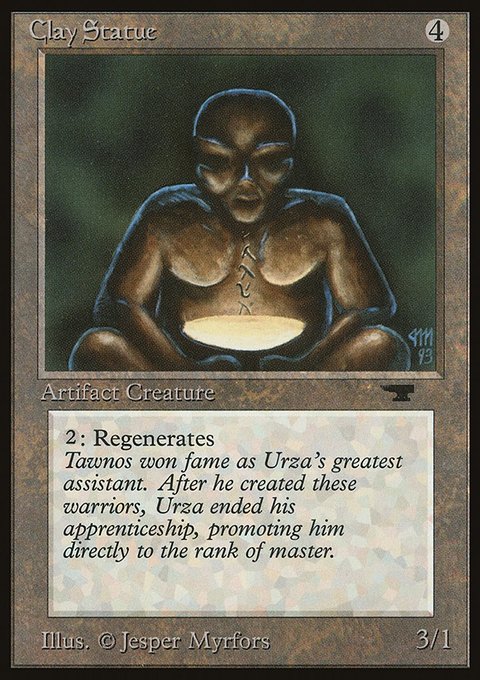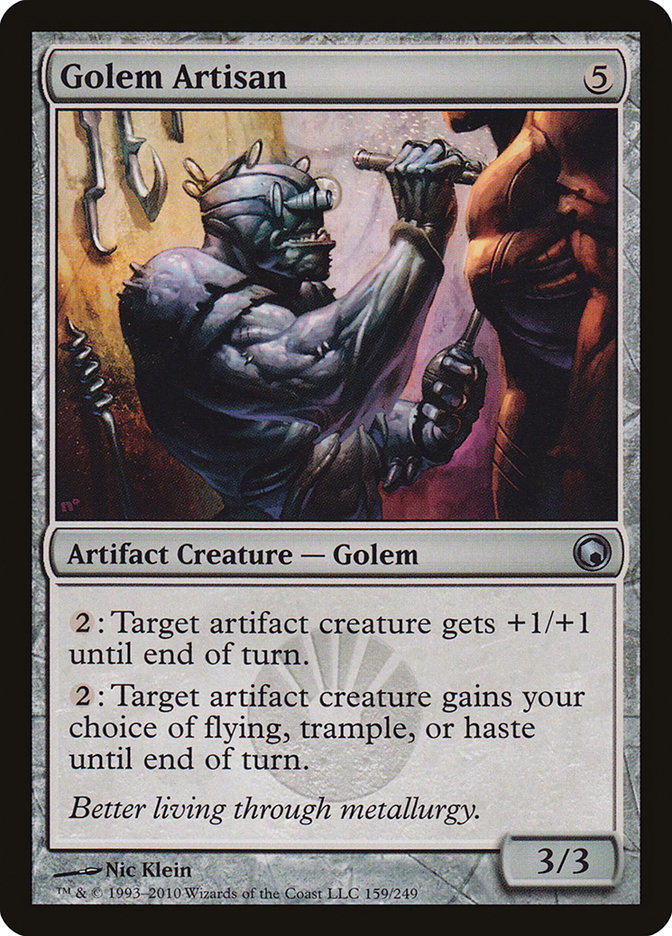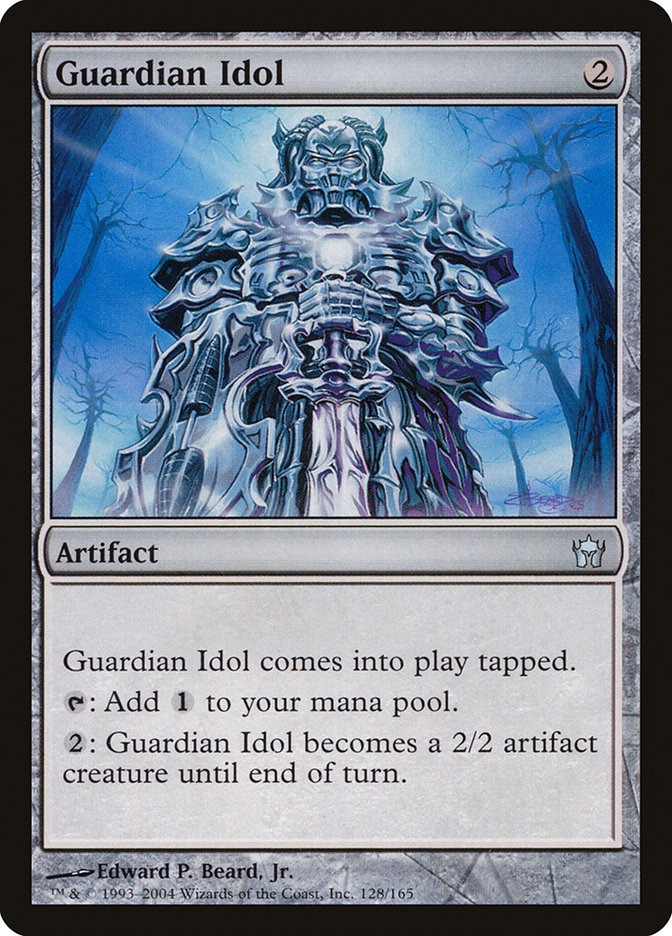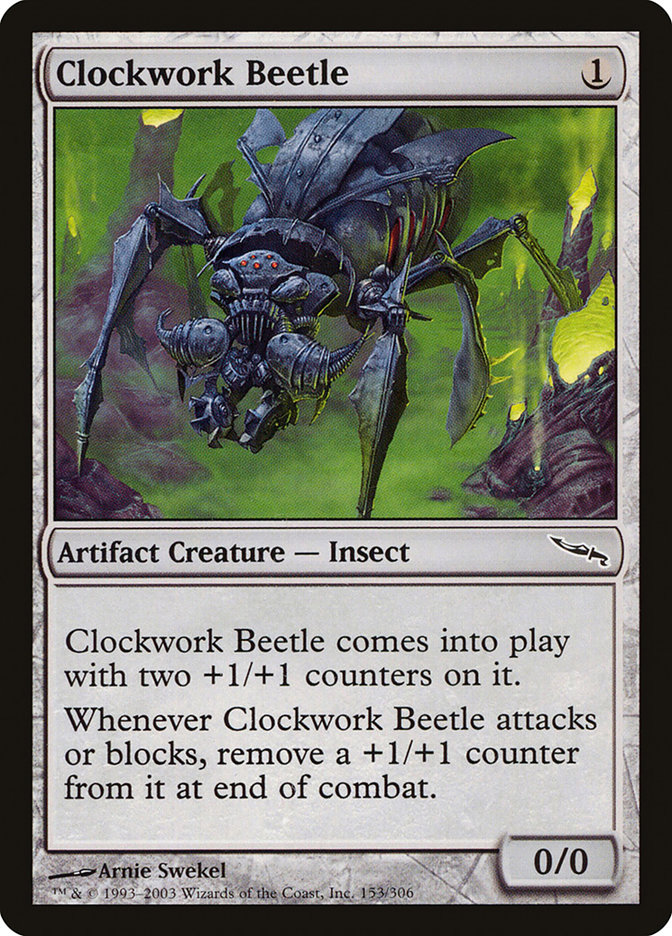Clay Statue MTG Card
| Card sets | Released in 7 setsSee all |
| Mana cost | |
| Converted mana cost | 4 |
| Rarity | Common |
| Type | Artifact Creature — Golem |
| Power | 3 |
| Toughness | 1 |
Text of card
: Regenerates
Tawnos won fame as Urza's greatest assistant. After he created these warriors, Urza ended his apprenticeship, promoting him directly to the rank of master.
Cards like Clay Statue
Clay Statue is a unique artifact creature in the realm of MTG, reminiscent of classic, mana-efficient constructs. Its most direct parallel can be found in cards like Golem Artisan, which also deals with the manipulation and enhancement of artifact creatures. While Golem Artisan can provide a power boost or extra abilities at a cost, Clay Statue stands out with its straightforward regeneration ability, allowing it to return to the battlefield after destruction for a modest mana fee.
Delving into similarly costed creatures, we recognize Guardian Idol, an artifact that can transform into a creature with power and toughness. Unlike Clay Statue, Guardian Idol doesn’t possess the regeneration capability but offers mana acceleration. Another comparison is with Clockwork Beetle, a creature which arrives with +1/+1 counters but decreases in power with each attack, something the stalwart Clay Statue avoids.
In examining the potentials these artifacts bring, Clay Statue offers a resilience that can be particularly frustrating for opponents. Its simple yet effective regeneration invites a strategy of endurance, making it a compelling choice in artifact-oriented decks that value persistence on the battlefield.
Card Pros
Card Advantage: Even though the Clay Statue doesn’t directly let you draw cards, it offers recursive utility. Once in the graveyard, it can be returned to your hand, providing a strategic edge through repeated board presence.
Resource Acceleration: While not a direct source of mana acceleration, the recurring nature of the Clay Statue can provide steady board state investment without demanding additional resources from your hand after the initial cast.
Instant Speed: Though it operates at sorcery speed, the Clay Statue’s regeneration ability can be used at instant speed. This allows for unexpected resilience, enabling the statue to stand firm against removal spells and combat damage that might catch an opponent off guard during their turn.
Card Cons
Discard Requirement: A particular drawback of the Clay Statue is that it demands resource management to maintain its presence on the field. Each time it regenerates, it pulls from your available card resources, potentially leaving you short-handed during crucial moments of gameplay.
Specific Mana Cost: The activation cost for Clay Statue’s regeneration ability requires generic mana, which can be a restriction. This means decks that may benefit from color-specific mana acceleration or cost-reduction effects can’t take full advantage of this aspect, making it less flexible in mana-intensive plays.
Comparatively High Mana Cost: With a casting cost of four mana for a relatively modest creature, the Clay Statue can be considered costly. In many cases, players can summon creatures with equal or greater power and toughness for the same or lower mana investment, making the Clay Statue a less competitive option in the current metagame.
Reasons to Include Clay Statue in Your Collection
Versatility: Clay Statue presents an adaptable choice for players looking for resilience in artifact-centric decks. Its ability to regenerate makes it a durable blocker or an attacker that can withstand removal spells, fitting well into various deck archetypes.
Combo Potential: With its self-regenerating feature, Clay Statue works well in synergistic setups that capitalize on artifacts being destroyed and re-entering the battlefield. It can be paired with cards that track artifact status and convert that into an advantage.
Meta-Relevance: In a meta where artifacts are prominent, having Clay Statue can be significant. It serves as a recurrent threat in prolonged games and is not easily dispatched, maintaining board presence against decks that might otherwise overpower single-use creatures.
How to beat
Clay Statue is a unique artifact creature that, while not seeing widespread play in the most competitive of Magic: The Gathering decks, can occasionally surface in casual circles or limited formats. It stands out for its regeneration ability making it a resilient blocker or an enduring threat in longer games. To effectively handle Clay Statue, it’s important to utilize removal spells that bypass its regeneration, such as those causing exile or effects that reduce toughness to zero.
For example, using Path to Exile or Swords to Plowshares can permanently remove it from the battlefield without triggering its regeneration. Meanwhile, spells like Dismember or Fatal Push target its stability by adjusting its toughness, effectively rendering the regeneration ability moot. In addition, managing your resources smartly ensures that the cost of activating its regeneration does not gain the upper hand. It’s these strategies that enable players to mitigate the presence of Clay Statue and maintain control over the board state.
Remember, success in Magic: The Gathering hinges on adaptability and understanding the nuanced interactions between cards. Recognizing the capabilities of a card such as Clay Statue and preparing suitable countermeasures invariably positions you for strategic advantage during gameplay.
Where to buy
If you're looking to purchase Clay Statue MTG card by a specific set like Antiquities and Fourth Edition Foreign Black Border, there are several reliable options to consider. One of the primary sources is your local game store, where you can often find booster packs, individual cards, and preconstructed decks from current and some past sets. They often offer the added benefit of a community where you can trade with other players.
For a broader inventory, particularly of older sets, online marketplaces like TCGPlayer, Card Kingdom and Card Market offer extensive selections and allow you to search for cards from specific sets. Larger e-commerce platforms like eBay and Amazon also have listings from various sellers, which can be a good place to look for sealed product and rare finds.
Additionally, Magic’s official site often has a store locator and retailer lists for finding Wizards of the Coast licensed products. Remember to check for authenticity and the condition of the cards when purchasing, especially from individual sellers on larger marketplaces.
Below is a list of some store websites where you can buy the Clay Statue and other MTG cards:
 BUY NOW
BUY NOW BurnMana is an official partner of TCGPlayer
- eBay
- Card Kingdom
- Card Market
- Star City Games
- CoolStuffInc
- MTG Mint Card
- Hareruya
- Troll and Toad
- ABU Games
- Card Hoarder Magic Online
- MTGO Traders Magic Online
See MTG Products
Printings
The Clay Statue Magic the Gathering card was released in 7 different sets between 1994-03-04 and 2011-01-10. Illustrated by 2 different artists.
| # | Released | Name | Code | Symbol | Number | Frame | Layout | Border | Artist |
|---|---|---|---|---|---|---|---|---|---|
| 1 | 1994-03-04 | Antiquities | ATQ | 44 | 1993 | Normal | Black | Jesper Myrfors | |
| 2 | 1995-04-01 | Fourth Edition Foreign Black Border | 4BB | 305 | 1993 | Normal | Black | Jesper Myrfors | |
| 3 | 1995-04-01 | Fourth Edition | 4ED | 305 | 1993 | Normal | White | Jesper Myrfors | |
| 4 | 1995-08-01 | Rinascimento | RIN | 109 | 1993 | Normal | Black | Jesper Myrfors | |
| 5 | 1995-08-01 | Renaissance | REN | 120 | 1993 | Normal | Black | Jesper Myrfors | |
| 6 | 1997-03-24 | Fifth Edition | 5ED | 355 | 1997 | Normal | White | Adam Rex | |
| 7 | 2011-01-10 | Masters Edition IV | ME4 | 189 | 1997 | Normal | Black | Jesper Myrfors |
Legalities
Magic the Gathering formats where Clay Statue has restrictions
| Format | Legality |
|---|---|
| Oldschool | Legal |
| Commander | Legal |
| Legacy | Legal |
| Paupercommander | Legal |
| Oathbreaker | Legal |
| Pauper | Legal |
| Premodern | Legal |
| Vintage | Legal |
| Duel | Legal |
| Predh | Legal |
| Penny | Legal |









